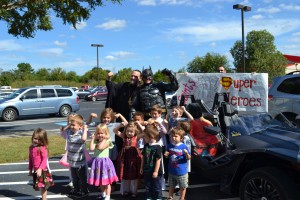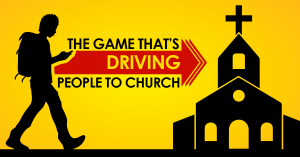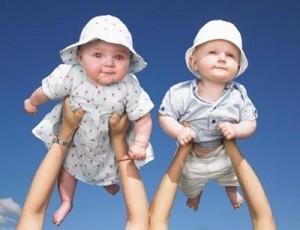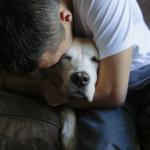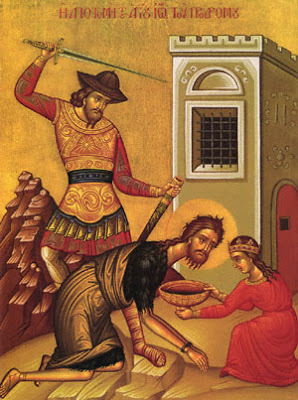 And to think, the Beheading of St John the Baptist old style is September 11th …
And to think, the Beheading of St John the Baptist old style is September 11th …
It was on this day in 2005 that Hurricane Katrina hit the Gulf Coast near New Orleans. Before it reached land, it was the strongest hurricane ever measured in the Gulf of Mexico, with winds of up to 175 miles per hour. But by the time it hit New Orleans on this day, it had lost some of its strength. The wind damage was much worse in parts of Mississippi. Early on, most people thought New Orleans had dodged the bullet.
But two reporters from the New Orleans Times-Picayune newspaper got a tip that there might be a leak in one of the levees, so they rode bikes out to the levee of the 17th Street canal. They never even made it to the levee. One of the main streets on their route was filled with rushing water, more than seven feet deep, and it was rolling south toward the rest of the city. More than 80 percent of the city was eventually flooded, about 140 square miles, which is seven times the size of Manhattan. The water rose higher than 14 feet in some places.
All communication in the city began to break down. The 911 operators had evacuated, and so people calling 911 just reached an answering machine. Eventually there was no power, no phone service, no cell phones. Many of the police officers in the city abandoned their posts and just tried to save themselves. The local prison was evacuated, and several prisoners escaped. National Guard troops didn’t arrive until the fourth day of the disaster.
Many of the journalists at The Times-Picayune slept in their office building the first night after the hurricane, and they realized the following morning that they had to evacuate or they’d be stranded. A total of 240 employees and some family members piled into all the newspaper delivery trucks available, and they drove out of the city.
The staff of The Times-Picayune had to evacuate their building, but the editor Jim Amoss was determined to keep publishing the newspaper even if only on the Internet, so a small group of journalists stayed behind in the city to cover what was going on. By September 1, the newspaper had begun printing the paper again, and they delivered it free to shelters and hotels around the city. On Friday, September 2, reporters brought copies of the newspaper to the Convention Center, where many people had been living for days. Witnesses said that the people at the Convention Center wept at the sight of their hometown newspaper. Reporters then began distributing the paper to refugees and relief workers throughout the city, and residents of the city were overwhelmed by emotion when the newspaper arrived on their doorstep. The Times-Picayune eventually won two Pulitzer Prizes for its Hurricane Katrina coverage, including a gold medal for meritorious public service.
Stolen from The Writer’s Almanac, August 29, 2007.
Image Source



